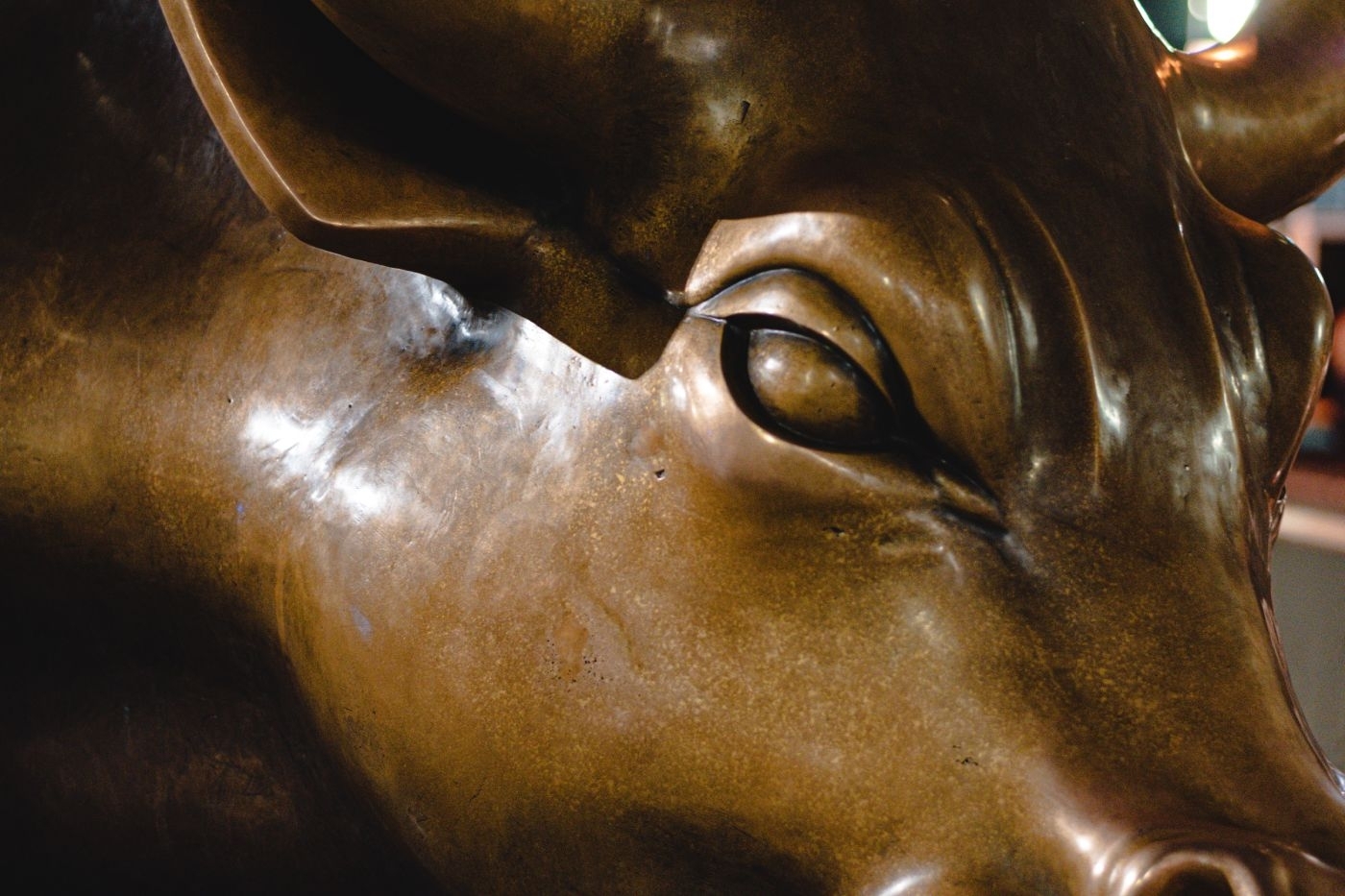
What is an ETF (exchange-traded fund)?
An exchange-traded fund (ETF) is a type of investment security that operates like a managed fund. Typically, an ETF will track a particular index, sector or other assets, but unlike managed funds, it can be traded on a stock exchange like a regular stock.
Key highlights:
An exchange-traded fund (ETF) is a basket of securities that trade on exchanges.
ETFs are growing in size. Almost US$500b has been invested into ETFs in the U.S. over 2022.
There are various types of ETFs depending on your risk profile and your investment strategy.
ETFs are investment vehicles that are listed on the stock exchange and provide investors with the return of some benchmark. The appeal is obvious, it's a simple low-cost means of gaining a diversified portfolio with the capacity for intraday trading. They are a powerful tool in any investor's toolkit.
🎓 Learn more: The beginner's guide on how to invest in ETFs→
What is an ETF (exchange-traded Fund)?
An ETF is called an exchange-traded fund because it's traded on an exchange just like regular stocks. The price of an ETF can change throughout the day as shares are bought and sold on the market. These funds hold multiple underlying assets, rather than only one like a typical stock.
The ability for ETFs to be traded daily makes them unlike unlisted funds which are not available on an exchange and can only be traded once per day after market close.
An ETF can be structured to track anything, from the price of an individual commodity to a large and diverse collection of securities. They can even be used to track a specific investment strategy.
How do ETFs work?
Exchange-traded funds hold multiple underlying assets, rather than only one like your typical stock. So a fund provider will own the assets, design a fund to track its performance, and then sell shares in that fund to investors.
Shareholders own a portion of an ETF but not the underlying assets in the fund. Despite that, investors may still receive lump dividend payments or reinvestments for the stocks that make up the index.
ETFs are designed to track the price of their underlying assets. This means that the ETF prices shouldn’t differ from the assets, with the price fluctuating during the day based on its underlying asset's shifting in value.
🎓 Learn more: ETFs vs Stocks→
How big is the ETF market?
The ETF market is massive and continues to grow. U.S. exchange-traded funds pulled in US$500b in new client money over 2022. It is well below 2021's full-year tally of US$935b but it's in line to overtake the 2020 record of US$501b.
As of June 2022, the value of assets managed by ETFs globally was over US$10.02t with over 8,000 ETFs worldwide. The largest market for exchange-traded funds was in the U.S. which currently has 74% of the global ETF market.
One of the other large markets for ETFs is the Asia Pacific region which has seen growth of 28% in assets under management since 2020. There is currently US$690b sitting in ETFs in the region.
💡Related: Looking for the best U.S. ETFs?→
✅ Sign up to Stake to start investing in ETFs from $3 brokerage.
Types of ETFs
There are different types of ETFs that can suit any investment objectives.
Equity ETFs
These are probably the most common types of ETFs. They track an index of equities and let you target sectors that may be doing well at the time, like technology or lithium stocks.
Commodity ETFs
These are often harder to access than stocks, but they are a great way to get into commodities like gold, silver or even oil. These are attractive alternatives to stocks to help diversify your portfolio. However, they can be less transparent. Commodity ETFs use derivatives that track the underlying price of the commodity but can carry more risk.
Bond ETFs
Bond ETFs are funds that invest in various fixed-income securities such as corporate bonds or Treasuries. They can allow ordinary investors access to passive exposure to benchmark bond indices.
International ETFs
An international ETF is any ETF that invests specifically in foreign securities. The focus may be global, regional or even on a specific country and could hold equities or fixed-income securities.
Sector ETFs
This is a pooled investment vehicle that invests specifically in the stocks and securities of a particular industry or sector, typically identified in the fund's title. These can be used to invest in an entire industry without having to piece together the individual stocks in that sector. The VanEck Global Clean Energy ETF (CLNE) gives investors access to 30 of the largest global companies involved in the production of clean energy and clean technology.
Smart beta ETFs
Smart beta is the term given to ETFs which track an index that differs from the traditional market capitalisation approach of selecting shares, bonds or other assets. That is, smart beta ETFs take a “smarter” and more considered approach to what goes into the fund rather than just considering the size of the company. For example, the VanEck MSCI International Small Companies Quality ETF (QSML) focuses on small caps which have the highest “quality” scores, based on high return on equity, earnings stability and low financial leverage.
Passive and Active ETFs
Passive ETFs tend to follow a buy-and-hold indexing strategy to track a particular benchmark. The portfolios are typically updated quarterly to reflect changes in the reference index. Active ETFs utilise one of several investment strategies to outperform a benchmark. In these ETFs, portfolio managers will undertake research to determine which underlying securities to hold and in what percentages. They will actively manage the weightings of the stocks depending on valuations.
Currency ETFs
Currency ETFs are for investors interested in gaining exposure to the performance of a particular foreign currency.
Inverse ETFs
Inverse ETFs use derivative contracts to deliver positive returns from a decline in the value of an underlying asset. These may be referred to as short ETFs as they focus on profiting from negative returns.
Leveraged ETFs
These are marketable securities that use financial derivatives and debt to amplify the returns of an underlying index. A typical ETF tracks the securities on a one-to-one basis but a leveraged ETF may aim for 2:1 or 3:1 ratio.
💡Related: Find the best performing ETFs on the ASX→
💡Related: Are these the best ETFs to buy and hold?→
How to buy ETFs?
Investing in ETFs is as simple as how you would invest in stocks, but we've still covered in detail how to get started investing in exchange-traded funds. For a quick step-by-step breakdown, see below.
ETFs are available on most online investing platforms, including Stake, where you can trade Australian ETFs and ETFs from the U.S.
Find a stock trading platform: You'll need to sign up to an investing platform with access to the ETF investment you are looking for. Stake can help with that.
Fund your account: Complete an application with your personal and financial details. Fund your account with a bank transfer, debit card or even Apple/Google Pay.
Search for the ETF: Find the ETF you are looking for. Do you want an actively managed ETF, a commodity ETF? Once you know the particular ETF you are after then you can invest. Do your own research to ensure it is the right investment product for your own circumstances.
Choose an order type and buy: Buy on any trading day with a market order or use a limit order to delay your purchase of the ETF shares until it reaches your desired stock price. Look into dollar cost averaging to spread out your risk, which smooths out buying at consistent intervals.
Monitor your investment: Optimise your portfolio by tracking how your exchange-traded fund performs with an eye on the long term. You may be eligible for dividends and shareholder voting rights that affect your stock.
"The popularity of ETFs continues to increase, with the ETF sector in Australia growing by 3% over the last 12 months to $128.5 billion. We’re seeing investors use the recent market drop as a buying opportunity, with the most popular ETFs for 2022 being broad-based equity exposures. For example, one of the most popular ETFs for Australian investors this year is VanEck’s International quality ETF, ASX: QUAL, which includes the highest quality international companies based on high return on equity, earnings stability and low financial leverage. Recently with the fall in the AUD the hedged version of QUAL, ASX:QHAL is also proving popular. Investors have also been gravitating to sectors that typically do well in periods of rising inflation like global infrastructure (e.g. ASX: IFRA) and global REITs (e.g. ASX: REIT)."
Russel Chesler, Head of Investments and Capital Markets, VanEck
How do investors use ETFs?
Investors utilise ETFs to help diversify their portfolio and manage risk. One of the most important benefits of ETFs is the instant diversification they provide. Diversification is a golden rule of investing because it reduces risk. As an ETF spreads your investment across a number of investments, it is considered less risky than investing in individual investments.
ETFs have become one of the most popular ways to invest around the world because they are transparent, efficient and are typically low-cost. Their popularity also continues to grow because they have helped make investing highly accessible.
ETFs have made it possible for everyday investors to access markets, asset classes and investment strategies that were previously only available to institutional investors. Now it is possible to do it all in one trade on ASX and Wall St.
As an example, many Australian investors use ETFs to access global portfolios that include companies like Microsoft (MSFT), Disney (DIS) and Amazon (AMZN) which are listed on exchanges outside of Australia.
There are a multitude of companies and industries overseas that either don't exist or have a very limited offering in Australia. For example, multinational pharmaceuticals, clean energy businesses and listed private equity companies.
ETFs are also used to access “smart” investment strategies often using data and analysis employed by active fund managers and institutional investors. For example, investing in the world’s highest “quality” companies or investing in companies that offer enhanced “value”, where a company is trading at a discount and is a “cheap” buy in context of its fundamentals and peers. These types of ETFs are part of a subset of smart beta ETFs.
What should investors look for in an ETF?
As an investor, because there is such an enormous universe of ETFs, it's important you focus on those that will suit your portfolio and long-term investment strategy. Not all ETFs are created equal. Like any financial product, it’s your hard-earned money on the line so it pays to do your research before investing.
1. Check the credentials of the ETF provider
You want to know your money is being managed by experts with a deep history in funds management and global investment expertise. How long has the business been around globally? What is their track record of opening and closing funds? For example, VanEck is one of the world’s largest ETF providers with a strong pedigree of building innovative products and has been helping people invest since 1955.
2. Evaluate the ETF’s “index”
That is, how shares/bonds/assets are selected to be included in the ETF. It’s easy to get romanced by how an ETF is marketed but it’s important that it meets your personal investment objectives and the outcomes you are trying to achieve. Index design should be supported by reputable research and not just be a short-term idea or fad that won’t have longevity.
3. Check the ETF’s track record
It’s also easy to be seduced by the most recent performance but performance should be viewed in context of what else is happening in markets. The question to ask is, does the ETF perform in the manner it should?
For example, if your ETF is a broad-based strategy that focuses on Australian equities, did it go up/down when the S&P/ASX 200 went up/down? By how much? It can be helpful to check the long-term history of the ETF and how it performed in different market environments.
4. Make sure you're aware of the fees and the risks
Your ETF provider should have fee details and the key risks displayed on their website. You can check the ETF’s Product Disclosure Statement (PDS) for more details. We always recommend speaking to a financial adviser who can help you determine options best suited to your specific needs.
Advantages of exchange-traded funds
Here are just a few advantages of ETFs and why they have become such a popular investment:
Easy access to markets, asset classes and investment strategies that were previously only available to institutional investors.
Transparency. With ETFs, you know what shares or other assets are in the fund, along with how they are selected for inclusion. Prices are also transparent, you can track the price of your ETF throughout the trading day and know what price you are getting when you trade your ETF.
Helps to manage risk. As your investment in an ETF is spread across a number of shares or other assets, it is considered less risky than owning individual shares or other assets.
You don't need a lot of money to start investing in ETFs. ETFs are a way to invest small amounts of money into multiple companies or other assets.
Lower Costs. The management fees for index-tracking ETFs are usually less than investing in active funds that invest in the same asset class.
Can save time. You get a diversified portfolio in a single trade and managing an ETF or a suite of ETFs can take much less time than selecting, building and re-balancing your own portfolio of stocks.
Liquidity. ETFs trade on an exchange just like a stock. So, you can buy and sell your ETF whenever the stock market is open at a price close to its net asset value.
Disadvantages of exchange-traded funds
There are many benefits of ETFs but also some disadvantages are listed below:
You don’t get to pick your own stocks.
Exchange-traded fund FAQs
What was the first ETF?
The first ETF was created in Canada in 1990, this was followed by the SPDR S&P 500 ETF (SPY) which was launched in 1993 in the US.
What is the difference between an ETF and index fund?
The main difference between an ETF and an index fund is that an ETF is listed on an exchange like the ASX and can be traded like a stock. That is, you can buy and sell ETFs during the trading day. Index funds have an application and redemption process that is opaque because you do not know which price you are getting and it is only completed at the price at the end of the trading day you request your transaction, assuming you made the cut-off.
Do ETFs pay dividends?
Yes, ETFs pay dividends.
This does not constitute financial product advice nor a recommendation to invest in the securities listed. Past performance is not a reliable indicator of future performance. As always, do your own research and consider seeking appropriate financial or taxation advice before investing.

